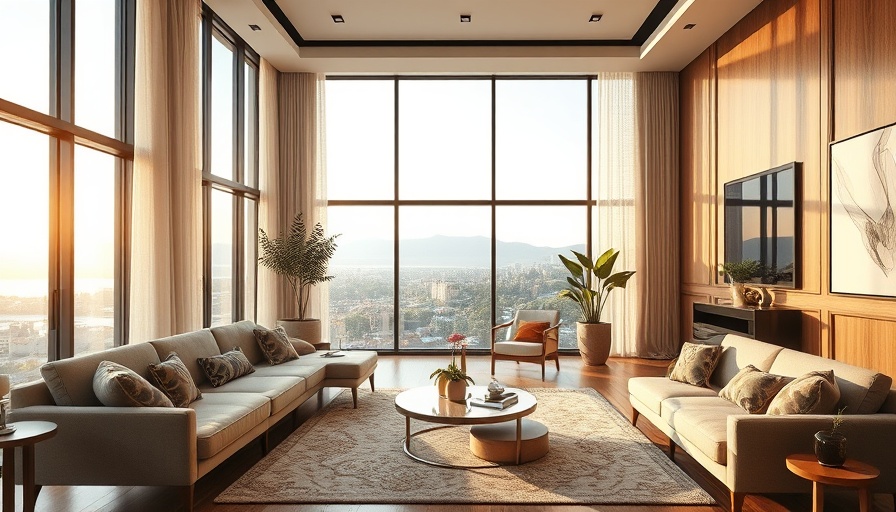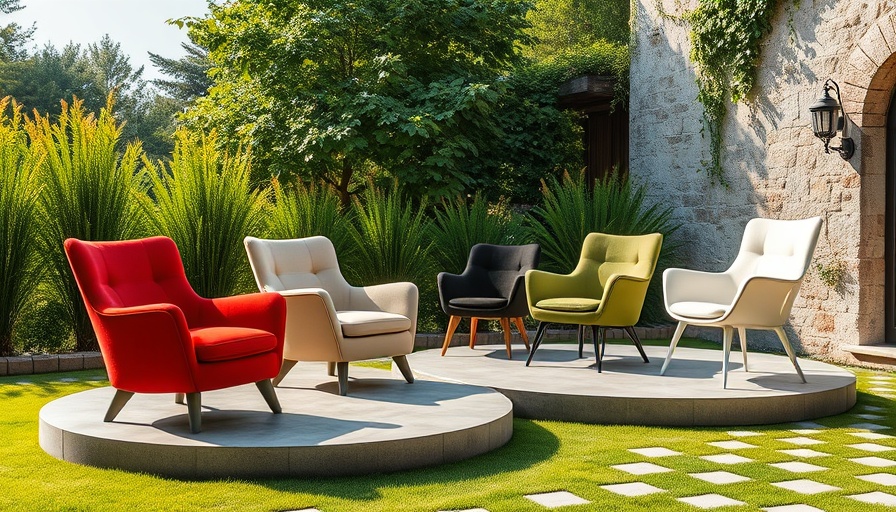
A Journey Through Modernism: The Transformation of Latitude 43
In the charming coastal town of Saint-Tropez, the Latitude 43 stands as a bold testament to architectural innovation, thanks to the vision of French Rationalist architect Georges-Henri Pingusson, who first conceived the building in 1932. Known for its striking modernist design, Latitude 43 was once referred to as a "stranded ocean liner," a fitting descriptor for its nautical appearance, characterized by circular porthole windows and volumes reminiscent of ship hulls. After surviving a tumultuous history, including serving as a military headquarters during World War II and a subsequent transformation into residential apartments, the building's rich narrative continues with a contemporary reinterpretation led by Milan-based design duo Dimore Studio.
Embracing Modernism with a Twist
Dimore Studio, helmed by talented designers Emiliano Salci and Britt Moran, took on the challenge of rejuvenating two apartments within the historic Latitude 43. They infused their creations with cinematic precision, fusing mid-century design enthusiasm with a modern flair. Each apartment now tells its own story through carefully curated design elements that pay homage to the iconic Modernist period. The transformative journey of these spaces draws from a range of 20th-century design icons, resulting in a refined yet inviting atmosphere.
Cinematic Design Elements in Every Corner
The designers approached the living areas of the Latitude 43 with an intent to create spaces that resonate with nostalgia and grace. For instance, the oversized Tuareg rug in the living room adds a touch of warmth, while the LC1 Le Corbusier Sling Armchairs reflect classic modern comfort. These elements are thoughtfully juxtaposed with more contemporary fixtures such as the striking Eclipse Low Table by Gabriella Crespi and the Orient A Ceiling Lamp, which provide a harmonious blend of old-world charm and modern aesthetics. The incorporation of Vietri tile flooring directly referencing the work of Gio Ponti enhances the authenticity of the space while nodding to its storied past.
A Nautical Palette and Natural Light
One of the most striking aspects of Dimore Studio’s design is the seamless integration of light and color. The apartments harness an abundance of natural light, thanks in part to the floor-to-ceiling-length curtains that frame expansive views of Saint-Tropez’s iconic landscapes. The color palette, predominated by hues of teal and cobalt, not only evokes a sense of sophistication but also stays true to the building's nautical roots. This connection to the sea is further accentuated in transitional spaces, where vintage lighting fixtures and art coexist, creating a visual narrative that guides visitors through the home.
Functional yet Fashionable: A Modern Kitchen
The compact kitchen embodies luxury with its teal cabinetry, finely edged with metallic accents. The inclusion of a historic Josef Hoffmann centerpiece reminds resident chefs and guests alike of the rich history that envelops this luxe living space. While practical in design, the kitchen does not shy away from elegance, demonstrating that modern living can coexist beautifully with artful detailing.
Dimore Studio’s Touch: The Art of Restoration
As a listed building, Latitude 43 presents specific challenges when it comes to renovation and upkeep. Dimore Studio’s expertise shines in their ability to respect the historical significance of the structure while simultaneously infusing modern touches that breathe new life into its interiors. This careful balancing act ensures that the rich narrative of Latitude 43 is preserved, offering a venue where history and modernity coalesce.
Why This Matters to Homeowners and Design Enthusiasts
The Latitude 43 renovation is more than just a design achievement; it offers valuable lessons for homeowners and contractors alike. The thoughtful restoration demonstrates the importance of marrying contemporary aesthetics with historical context—a principle that can guide anyone looking to undertake a renovation project. Homeowners should seek designs that honor the past while paving the way for future functionality. This ethos encourages sustainable practices and respectful design, ultimately creating spaces that tell a story.
Be inspired by the creativity at Latitude 43 and imagine how such design principles could enhance your own living space. Select modern furnishings that still reflect your home’s history, and prioritize natural light and color palettes that invite tranquility and warmth into your life.
Conclusion: The Future of Home Design
The renovation of Latitude 43 by Dimore Studio highlights a crucial conversation in home design: the balance of preservation and innovation. As designs evolve, they continue to tell the stories of places they inhabit. For homeowners and contractors, paying homage to the past while embracing the future yields untapped potential in today's design landscape.
As you explore your own home renovation projects, consider incorporating elements that reflect both personal taste and historical significance. Whether you are selecting timeless furnishings or updating spaces with modern touches, let your design decisions narrate your unique story.
 Add Row
Add Row  Add
Add 




Write A Comment